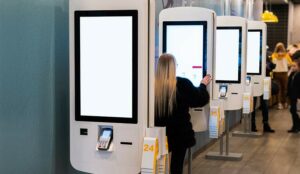Here are seven top tips from our readers on how to master automation and self-service.
When executed well, self-service and automation can create a slick and speedy customer-serving machine. There’s also the small matter of it costing much less than a good old-fashioned human with a headset.
Get it wrong, though, and it will be hugely frustrating for customers and can give the impression that you don’t even care enough to speak to them.
1. Personalise automation by user
Remember that some people want to self-serve and would rather speak to another human being as a last resort only. Others will just try to beat a route through any self-service channel to a real person.
If they are just hitting random buttons to get through, then the automated routing isn’t performing its function anyway.
Thanks to Stuart
2. Phone the IVR yourself
Phone up and go through the IVR (Interactive Voice Response) yourself, then think – was it easy? Was it bearable?
If not – instigate improvements.
Thanks to James
3. Customise the IVR based on CLI
Use the phone number the customer is calling in on (CLI) to identify customer details, such as location, products ordered and services used in the past.
Use this information to provide a customised IVR path.
Thanks to Sam
4. Build IVR into your mobile apps
This allows the customer to dial direct to the department they are looking for, thus reducing perceived navigation time through IVR, and costs to the business if they are using an 0800 or 0845 number.
Thanks to Robbie
5. Provide an IVR guide
Circulate a customised IVR usage guide card (size of a job card) which can be placed by a customer’s telephone.
When they know the layout of the system and where they want to go, IVR becomes much quicker to navigate and less of a chore.
Thanks to Diane
6. Make you recorded messages personable
Your recorded messages should meet the same standards as your live interactions with the customer – they should be polite, friendly, and should sound like you genuinely care.
Queuing messages like “we apologise for keeping you waiting – we value your call,” can often sound cold, robotic and insincere.
Something like “we’re really sorry for the wait – we’ll be with you as soon as we can” is still professional, but sounds more sincere.
Thanks to Matt Phil
7. Don’t forget the value of a real person
When your service is fully automated, it eliminates all opportunities to cross-sell or offer surveys at the end of a call.
Some customers may appreciate the speed and efficiency, but automated service can never be truly great customer service.
Thanks to Luke
Author: Jo Robinson
Published On: 14th Aug 2013 - Last modified: 9th Feb 2023
Read more about - Archived Content















